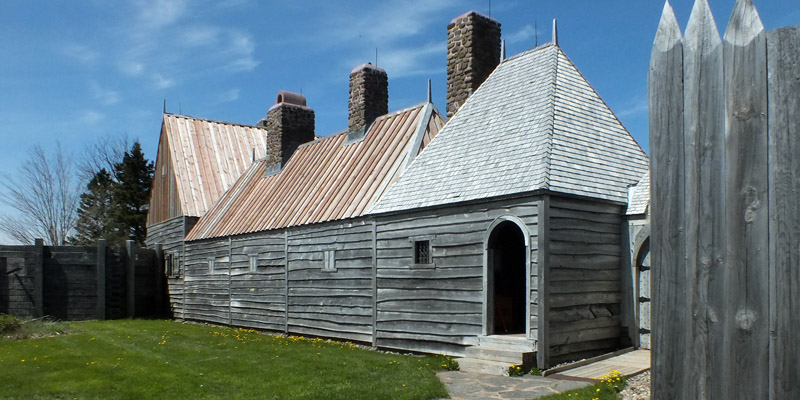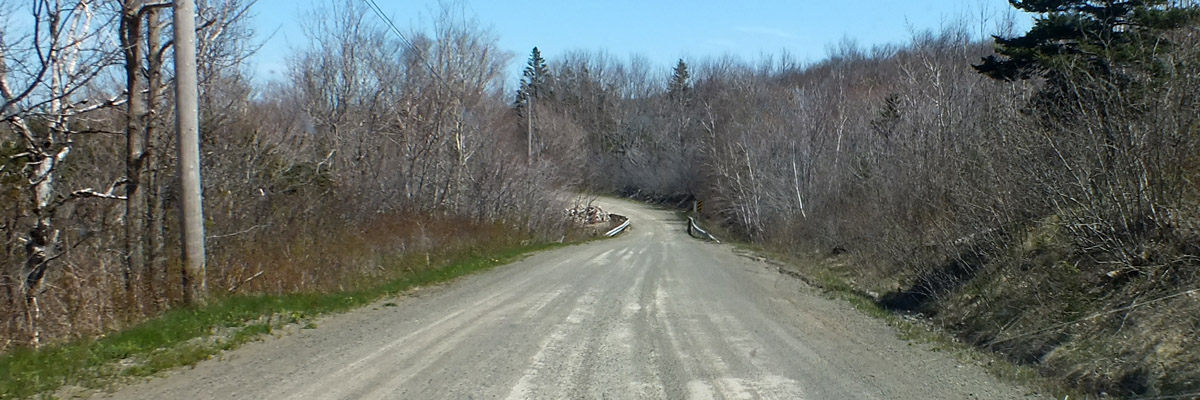
Six Ways To Fundy


9 May 2022
The North Atlantic Arc Home
| May |
| S | M | T | W | T | F | S |
| 5 | 6 | 7 | ||||
| 8 | 9 | 10 | 11 | 12 | 13 | 14 |
| 15 | 16 | 17 | 18 | 19 | 20 | 21 |
| 22 | 23 | 24 |
 |
|
Monday 9 May 2022--Coffee and pastry at a café in Annapolis Royal this
morning, followed by a stroll along the waterfront. This was a major port for a
long time, providing a transport link between Halifax and Saint John. It was the
rail terminal for a route to the former city for a while, until the line was extended
to the deeper port of Digby, after which Annapolis Royal waned in importance.
An information panel near the pier tells the story of Rose Fortune, who arrived in Nova Scotia at about the age of ten. Her family was among the 3,000 or so Black Loyalists who emigrated to various parts of Canada in the wake of the American Revolution, former slaves who were promised freedom in exchange for their loyalty to the Crown. Freedom they got; equality was yet elusive, as they were given inferior land grants and generally treated as second-class citizens. There were those who nevertheless made their mark, and Rose was one. She began by hauling luggage from the wharf to local hotels, a humble enterprise that evolved into a transport business that lasted until late in the 20th century. She was eventually a well-respected, if somewhat eccentric, businesswoman; having apparently appointed herself Port Constable to impose and enforce the curfew on the waterfront, she is regarded by many as Canada's first policewoman. She lived to the age of 90, and was buried in an unmarked plot in the Garrison Cemetery. A descendant, Dr Daurene Lewis, became the first black female mayor in North America, elected in 1984. The Fundy Rose, the vessel on which I sailed yesterday from Saint John, was named for Rose Fortune. I drive across the Annapolis River and turn back along the shore, stopping to see two historic sites. The first is the Melanson Settlement, a farming village established by Charles Melanson and his wife in about 1664, and inhabited by their descendants until the Acadian deportation in 1755. There's no evidence of the archaeological digs done in what now appears to be a vacant field, and none of the interpretation panels (aside from the one at the entrance) around the site have been mounted for the season yet, so I am left with very little to see. The Port-Royal National Historic Site is just another mile along. It was to this spot that Pierre Dugua, Sieur de Mons and Samuel de Champlain moved their struggling colony in 1605, after their first disastrous winter on Île Ste-Croix. This is considered the first year-round settlement in North America north of Spanish territory, although it would be a stretch to call it successful. Under Champlain's guidance--Dugua had returned to France to tend to business, and never set foot in America again--l'Ordre de Bontemps, said to be North America's first social club, was founded for the purpose of hosting feasts and mounting theatrical productions, to pass the long difficult winter. Mi'kmaq Chief Membertou and his entourage were welcomed as equals to these events. Membertou, who claimed to be a hundred years old, and to remember meeting Jacques Cartier in 1534, was a great friend to the colony. Dugua lost his trading monopoly in 1607, and most of the colony returned to France. (Champlain went on to found the settlement that became Quebec City in 1608.) The Habitation was left in the care of Membertou, until the arrival of an expedition under the leadership of Sieur de Poutrincourt in 1610. Our old pal Charles de St-Étienne de la Tour was in this party. But the site was destroyed in a British raid in 1613, and the settlement dispersed. When the French regained control of the region in 1632, Port-Royal was re-established across the water, on the current site of Annapolis Royal. In 1939-41, a replica of the Port-Royal Habitation was built, largely through the fundraising efforts of Harriette Taber Richardson of Cambridge, Massachusetts, a frequent visitor to the area. This was the first Canadian National Historic Site to be reconstructed, and it's what the tourist can visit today, having stood 81 years--ten times longer than the original. It's not open for the season yet, so I can only view the exterior, as workmen do some maintenance with modern tools. I saw the interior many years ago, on one of my motorcycle trips. There are photos around the house somewhere. I continue on along the coast toward Digby Gut and pass through Victoria Beach, which I saw from the ferry yesterday. Then I round the headland to the Fundy side of North Mountain, curious to see if it's possible to drive all the way through to the Shore Road, farther along the coast. The map shows a road, but it looks very minor. Asphalt gives way to well-maintained gravel, and then to rutted dirt that should dissuade me; but I figure I can handle a few miles of this, if that's what there is. The track abruptly becomes an overgrown scree slope, and I am lucky to be able to turn around. Back near Port-Royal, I find the proper road up over North Mountain, and follow along the broad and well-paved Shore Road for about twenty miles. It connects a string of fishing villages, some no longer functional, some with modern harbors sheltering a handful of working boats. There is the occasional restaurant or seafood market, and a B&B here and there, but mostly there are quiet houses and summer cottages, strung out along the road. The nonfunctional light at Hampton, like others along the Fundy shore, has been moved inland, off the pier, having been adopted by a local preservation society. Back over the mountain I go, descending into Bridgetown for a coffee break. From there it's about fifty miles to my destination. I stay on the old Route 1, so I can see the towns and villages along the way. Somewhere I pass over from the Annapolis River watershed to that of the Cornwallis River, flowing in the opposite direction; the two form one long valley, nestled in between North and South Mountains, all commonly called the Annapolis Valley. It's famous for growing fruit, especially apples, and increasingly in recent years, for vineyards and wineries. The area is prosperous enough that some rather unsightly commercial strips have popped up here and there, but on the whole it's a very appealing part of the province. I pass through Kentville, the largest town in the valley (pop 6630) and arrive in the slightly smaller Wolfville (pop 5057) late in the afternoon. Acadia University, founded as Queens College in 1838, is here, and as I pass by, I see the aftermath of Commencement, a milling crowd of new graduates in cap and gown with their sharply-dressed parents. In fact, the micro-hotel I'm staying at is used as student housing during the school year; tonight is the first night it's available for its summer purpose, hosting tourists. My room is a bit Spartan in decor, but has full kitchen facilities, and on the whole is far nicer than any dorm I lived in during my student days (and, come to think of it, most of my apartments). There's a balcony looking over the main street, across to the Church Brewing Company, which looks very attractive. I will go down for an inspection in a few minutes. I have four nights here. Next |
Annapolis Royal to Wolfville
 |
Fort Anne
 |
Pierre Dugua, Sieur de Mons
 |
Annapolis Royal
 |
Annapolis Royal
 |
Sinclair Inn
 |
Annapolis Brewing Company
 |
Melanson Settlement Information Panel
 |
Port Royal Habitation
 |
Port Royal Habitation
 |
Port Royal Habitation
 |
Port Royal Habitation
 |
Port Royal Habitation
 |
Port Royal Habitation
 |
Victoria Beach Light
 |
Asphalt
 |
Gravel
 |
Dirt
 |
Forget It
 |
Up North Mountain...
 |
...And Over
 |
Shore Road
 |
Shore Road
 |
Chute Cove
 |
Hampton Light
 |
Bridgetown
 |
Bridgetown
 |
Wolfville From My Balcony
 |
Church Brewing Company
 |
Dusk On The Cornwallis
Next
| May |
| S | M | T | W | T | F | S |
| 5 | 6 | 7 | ||||
| 8 | 9 | 10 | 11 | 12 | 13 | 14 |
| 15 | 16 | 17 | 18 | 19 | 20 | 21 |
| 22 | 23 | 24 |
The North Atlantic Arc Home

Mr Tattie Heid's Mileage
Results may vary
MrTattieHeid1954@gmail.com